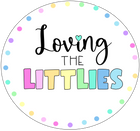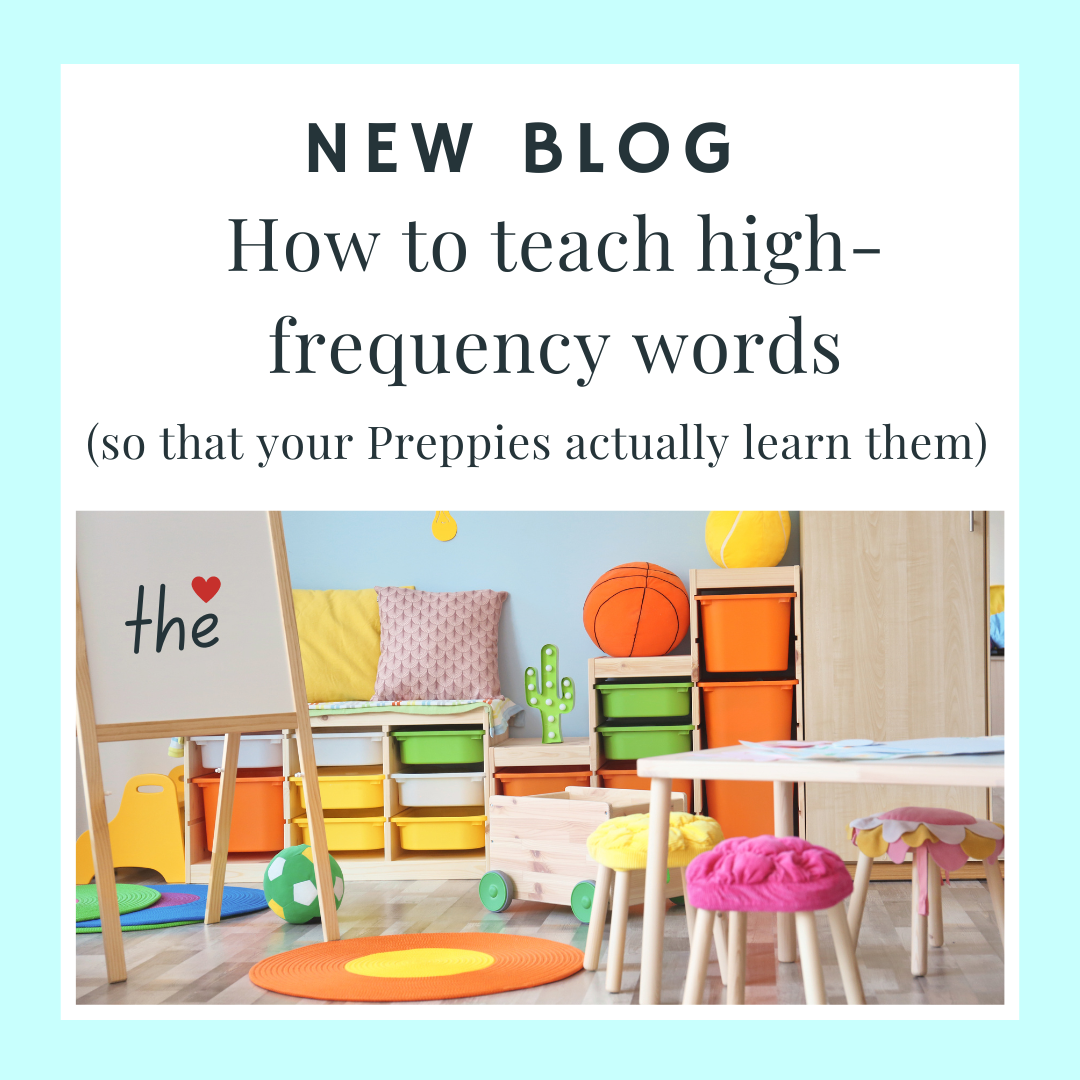Not too long ago, I'd give long lists of high-frequency words to my Preppies, printed on different coloured cards, and say, "Practise these words!"
Sound familiar? (Who else remembers those golden words?)
In class, we’d practise reading and writing those words in our lessons, and students were encouraged to learn them at home too.
Most kids would stick the coloured words to their fridge and practise reading them.
How they learned them? I’m not really sure. But I’m guessing many just remembered the order of them by heart.
Some students thrived. They learned them with ease.
But many others struggled. And it wasn’t for lack of trying. These students and their parents worked really hard to learn those words.
The problem wasn’t with them. The problem was with what I was asking of them. I was essentially asking them to rote learn them.
Fortunately I’ve come a long way since then.
So what is a better way to teach high frequency words?
Before we go too far, here’s a quick overview of some important terms.
High frequency words - These are common words that we see in our reading and writing. We want students to eventually read them ‘by sight’ (so without having to sound them out).
Flash words - Flash words are high-frequency words that are regularly spelled. The letters in the words make the sounds we would expect them to make. There is no tricky part. Students can decode them ‘in a flash’. Examples of flash words are: got, can, at.
Heart words - Heart words are high frequency words that can mostly be decoded using letter/sound knowledge, but there is a part that is irregularly spelled (or tricky!) Examples of heart words are: said, was, to.
How to teach high frequency words
When looking at a high frequency word, students need to connect the sounds in a word to the letters in the word. This is referred to as orthographic mapping.
When teaching high frequency words, we want to:
Say it, tap it, map it and write it.
Let's look at how you would use this process to teach a heart word
In this following example, let’s use the heart word said.
SAY IT:
In this part of the lesson, tell the students the high-frequency word and put it in a sentence. You could also have students come up with their own sentence using the word.
Example: “This word is said. Can you say said? Here is it in a sentence: I said hello to the teacher. Can you think of a sentence using the word said?"
TAP IT:
In this part, we are counting the sounds we hear in the word. You might like to count on fingers, or have students ‘tap out’ the sounds.
Example: “Lets tap the sounds in said. /s/, /e/, /d/. How many sounds did you hear? Three!”
MAP IT:
In this part, we use sound boxes (also known as elkonin boxes). Each sound goes into a box. So a word with two sounds will use two sound boxes etc.
Example: “Now let’s map the word said. As there are three sounds, I will need three sound boxes. What’s the first sound you hear in said? /s/. In this word, the /s/ is represented by the letter s. Let’s now focus on the last sound in the word: /d/. In this word, the /d/ is represented by the letter d.

Now we need to focus on the middle sound. What is the middle sound in the word said? /e/. In this word, the /e/ is made by the letters ai. Normally we would expect the /e/ sound to be made by the letter e, but in this word, the /e/ is being made by the letters ai.
That part is irregular. That is the part we need to learn by heart. So this would be a heart word".

WRITE IT:
In this part, we want students to write the word. You could get them to place a heart above the tricky or irregular part (the part that they have to remember 'by heart').
Example: “Now let’s write the word said. Take a photo of the word with your brain. Click! Now try to write the word said. Remember, there is a tricky part. The /e/ sound is being made by the letters ai. Place a heart above the tricky part!"
Now let’s look at an example of a flash word
In this following example, let’s use the flash word had.
SAY IT:
In this part of the lesson, tell the students the high-frequency word and put it in a sentence. You could also have students come up with their own sentence using the word.
Example: “This word is had. Can you say had? Here is it in a sentence: I had a sandwich for lunch. Can you think of a sentence using the word had?"
TAP IT:
In this part, we are counting the sounds we hear in the word. You might like to count on fingers, or have students ‘tap out’ the sounds.
Example: “Lets tap the sounds in had. /h/, /a/, /d/. How many sounds did you hear? Three!”
MAP IT:
In this part, we use sound boxes (or elkonin boxes). Each sound goes into a box. So a word with four sounds will use four sound boxes etc.
Example: “Now let’s map the word had. As there are three sounds, I will need three sound boxes. What’s the first sound you hear in had? /h/. In this word, the /h/ is represented by the letter h. What's the next sound you hear? /a/. The /a/ sound is represented by the letter a. Finally, what is the last sound you hear? /d/. The letter d is making the /d/ sound.
Is there a tricky part in this word? No! The letters are making the sound we could expect, so we can sound it out, in a flash! That means it is a flash word".

WRITE IT:
In this part, we want students to write the word. Remind them that there are no tricky parts, so they can sound out the word as they write.
Example: “Now let’s write the word had. Take a photo of the word with your brain. Click! Now try to write the word had. Remember, there is no tricky part. The letters are making their regular sounds".
In my experience, students are very receptive to this process. Once I’ve explicitly taught the word to them, we regularly revisit. I’ll say to the students, “Is there a tricky part in this word?” and they’ll be able to articulate whether it has one or not!
You might be interested in this resource!
Teaching high-frequency words to your Preppies in this way doesn’t have to be overwhelming. You can follow the above steps and I promise you, your students will enjoy it!
But if you’re looking for a stress-free way, I have just what you need.
This PowerPoint features 80 commonly used words and helps your students to learn these high frequency words in a scientific way.
As you work through the slides with your class, students will practise reading, tapping out the sounds, mapping the word into sound boxes, identifying if it’s a heart word or flash word, finding the word and writing the word.
And here’s the best bit…
And it's all been done for you!
The words get mapped into sound boxes for you. The tricky part in words is identified for you. So if you’re feeling unsure about this Science of Reading approach, you don’t need to worry. It’s all been done for you!
Ready to get this time-saving and unique resource and help your Preppies learn their words in a better way? Click here!




